Surfing expressions you need to know
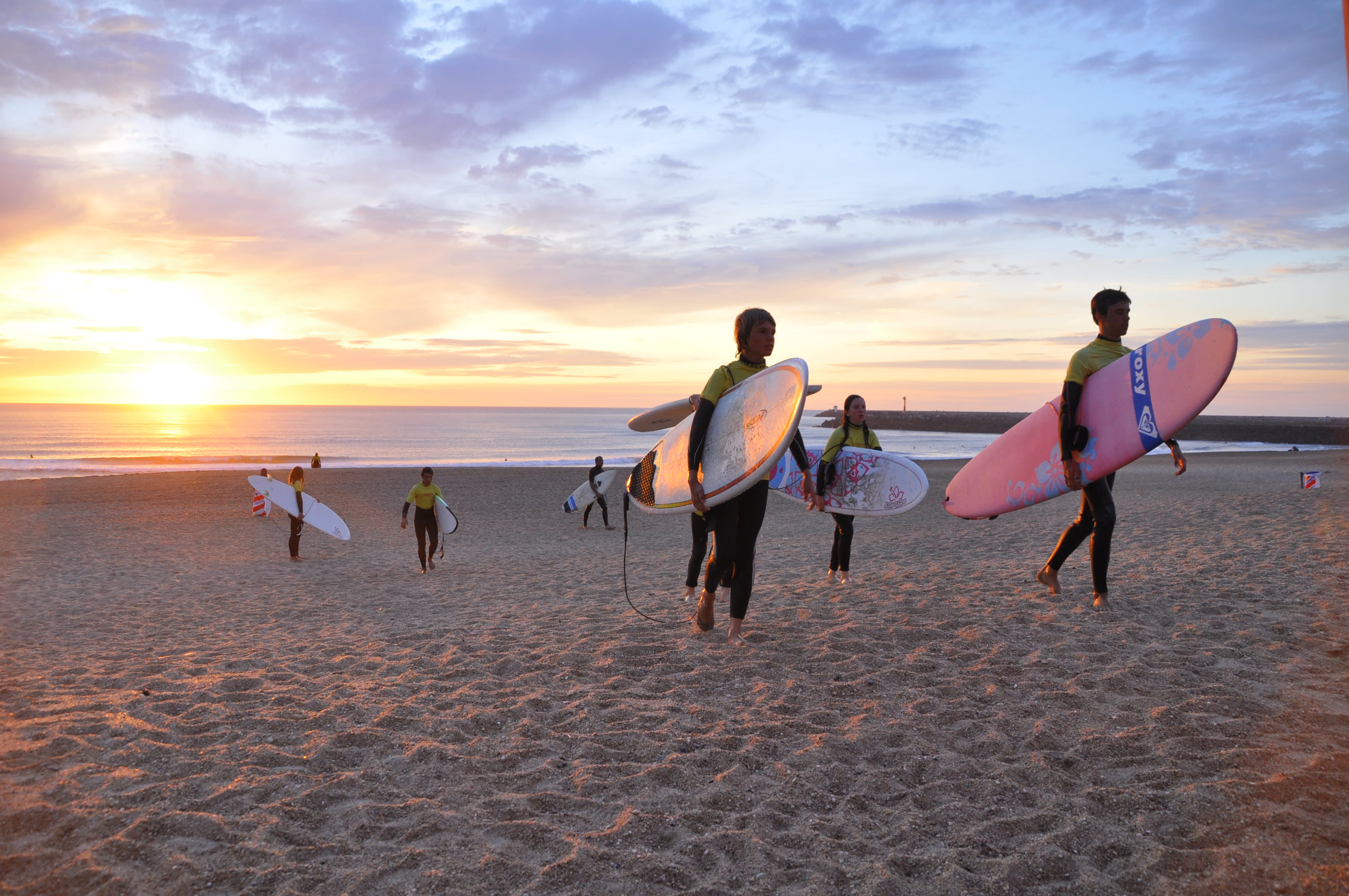
Aloha! We invite you to dive into the ocean of surfing expressions! With a good number of linguistic borrowings, including anglicisms, you're sure to want to understand and sharpen your lexicon to become a pro at this board sport.
Between "offshore wind" and "barrels", it's easy to get lost in the vast list of surfing expressions... Luckily, we've got just the thing to help you hone your surfing lingo, whether you're a beginner or an experienced surfer! Discover our complete selection of words you need to know to be able to communicate thanks to the unique and captivating language where every wave tells a story! It's possible to understand the world of surfing before you've surfed...
Types of waves and zones in the water

In the world of surfing, there are many different waves, each with its own name! In any case, when you see a "bump of water" on the horizon, you should be aware that the ripple will eventually turn into a wave as it approaches the beach. This wave can break in different forms. Most waves can be classified into the following types: a right, a left, an 'A Frame' or a 'Close-Out'.
Shoulder = part of the wave that is about to break, the surfer rides on this part.
The swell or swell = a regular train of waves, of long period, not generated by the local wind but rather by the wind blowing on a large stretch of sea without obstacles. The swell is the ripple created by the wind in the open sea moving across the ocean over long distances, giving rise to waves as they reach the coast.
Flat = the ocean has no waves. As its name suggests, the sea is flat, so there's no chance of surfing.
Right = A wave that 'rolls' to the right, from the point of view of the surfer riding the wave. If you're watching from the beach, facing the ocean, the wave will break to the left from your perspective.
Left = the opposite of right, a left is a wave that 'rolls' to the left when you look at the shore.
Line up = offshore area where surfers wait to catch the waves.
The bar = a zone of breaking waves that you have to cross.
Curl = the heart of the wave, the trough.
Glassy = smooth sea and waves, the best conditions for surfing.
A Frame = a wave in the shape of an "A", with two shoulders , one on the right and one on the left. These waves have the advantage of doubling the number of trajectories: 2 surfers can catch the same wave and go in opposite directions (one going right, the other left). This photo shows an A-frame wave.
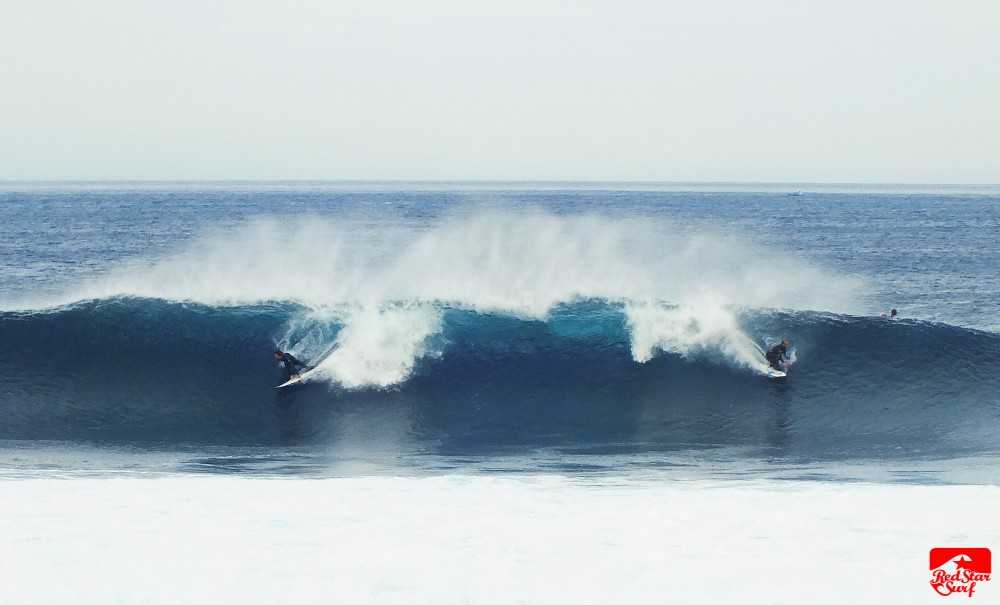
Close-out = This is a wave that "stops almost everywhere at once", making it impossible to surf left or right. It is possible to experience a close-out, but usually only one or two seconds after you stand up on the surfboard, the wave will break across its full width simultaneously. This allows you to surf straight to the beach (unless you're an experienced surfer, then you might opt for an air or floater).
Tube = Some waves form a cylinder that the surfer can ride from the inside. He is therefore surrounded by water, with the lip of the wave passing over him. You can see an example of a tube in the photo below.
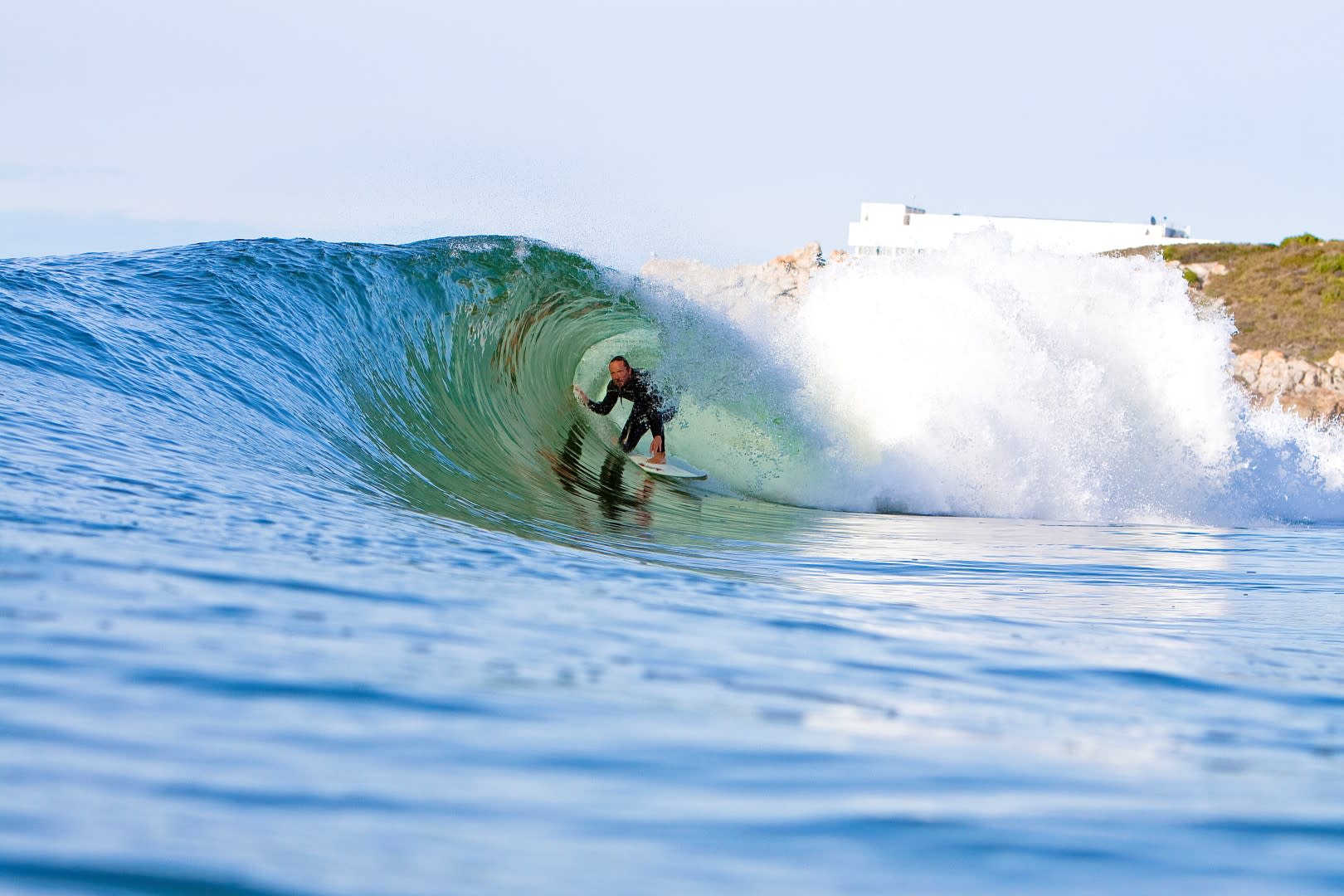
Foam = end of the wave made of foam.
Peak = the highest point of a wave, also the first part of the wave to break. Finding the peak also means being able to read and predict how the wave is going to break! When you're sitting on your surfboard, look towards the horizon. When you see a small wave in the distance, a sort of small bump, try to find the highest part of the wave (called the 'peak') that will break first. This will be the first place where the wave breaks.
Curl = the more 'curved' shoulder part of the wave, which is very steep. This is where most of the high performance manoeuvres take place. Advanced surfers use this part of the wave for manoeuvres such as airs and snaps, as this section offers good verticality, similar to a skateboard ramp.
The lip = the part of the wave that is projected forward, before the wave breaks.
Period = the number of seconds between two waves. The longer the period, the faster the waves move and the bigger and more powerful they are!
The bomb = in other words a crazy wave, a wave that all surfers want to ride.
Impact zone = the place where the breaking wave breaks.
The washingmachine = the dreaded zone for all surfers, it's a place in the water where you're taken and rolled in all directions within a breaking wave.
Types of wind
Surfers often talk about the type of wind because it's crucial, as it will influence the formation and quality of the waves as well as the wind speed! All these parameters will influence the conditions in which you practice your sport.
Offshore = wind from the land that improves surfing conditions. This wind deepens the wave. For example, the famous "tubes" are formed in optimal offshore wind conditions.
Onshore = offshore wind blowing from sea to land. This wind can worsen surfing conditions because it disrupts the waves.
Side-shore = wind coming from the sides.
Types of seabed
As for the seabed, it helps us understand the formation, quality and behaviour of waves, as well as warning us of potential dangers. Here they are:
Beach break = a beach with a sandy bottom. Waves break right and left, breaking in various places and stopping quickly. The sand is moved by ocean currents, resulting in the random and often temporary creation of 'magic' shoals where high-quality waves emerge.
Reef break = a beach with a coral and reef bottom, which is riskier than spots with a sandy bottom due to the hardness of the shoreline, which can be sharp. It's best to avoid reef breaks as a beginner.
Point break = spots where waves can break on sand or rock. They always start from the same point, be it a rocky point, sand, jetty or even a piece of sea debris such as the hull of a grounded ship. These waves open and roll left or right, they have nice shoulders and can be followed over long distances. These highly sought-after waves are the most enjoyable to surf.
Types of boards

You're probably wondering what type of board to choose for your surf lesson? Here's a list of the most commonly used boards in the surfing world...
Longboard = large board that glides smoothly, not recommended for beginners as it is heavy and requires practice to manoeuvre it well.
The gun = a board requiring a very good level of riding, this one is suitable for very big waves, it's a narrow and sharp board.
Hybrid = the perfect board for intermediates because it's manoeuvrable enough to experiment with tricks, for example.
Funboards = surfboards 7 to 8 feet long (2.1 to 2.4m), with a wide nose for easy use in a variety of conditions. Because of their increased stability and ability to perform in a variety of waves, these boards are ideal for beginners, but a well-designed board can also be suitable for experienced riders.
The fish = short, wide board , the ideal sidekick for small waves.
Shortboard = short, narrow board , very manoeuvrable and therefore perfect for radical tricks, but requires a minimum of technique. Not for beginners at first.
Leash = small accessory, a kind of rope that connects the surfer's ankle to the board. It's essential if you don't want to lose your board in a fall!
Parts of the board
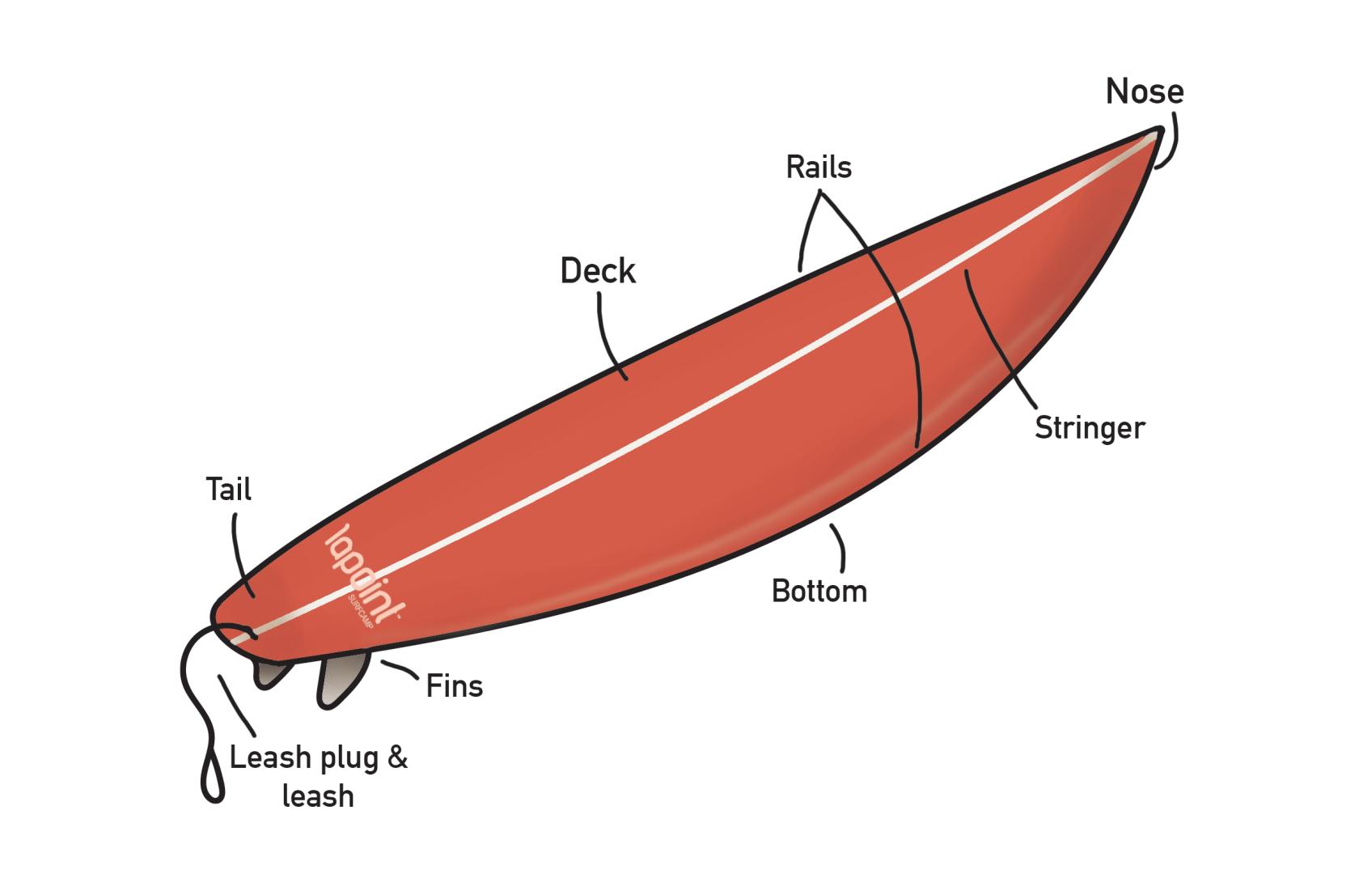
Tail = the shape of the back of the surfboard, it plays an important role in terms of manoeuvrability.
Nose = the front part of the board. There are different shapes of board front: pointed, rounded or elongated.
Rail = the edge of the board. The round rail offers greater stability and glides more smoothly through curves, while the pinched rail provides good grip and manoeuvrability.
Fins = the fins that are used at the bottom of the surfboard to give the necessary direction, speed and stability. They are generally used in groups of 3.
Deck = top part of the board.
Stringer = a strip in the centre and along the length of the board. Generally made of wood, this line adds strength and prevents the board from twisting or bending.
Surfing tricks
We know you dream of surfing like Patrick Swayze in Point Break and doing some insane tricks! But if you want to find out which surfer's tricks look like what, you've come to the right place:
The duck = figure in which the surfer dives into the water to avoid the wave that could bring him or her back to the shore. The ducking position involves plunging the board and your whole body into the water, stretching out your arms to press down on the board. This movement will allow you to go as far underwater as possible.
The take off = the action of getting up on the board to start surfing. Below is an example of a take off.
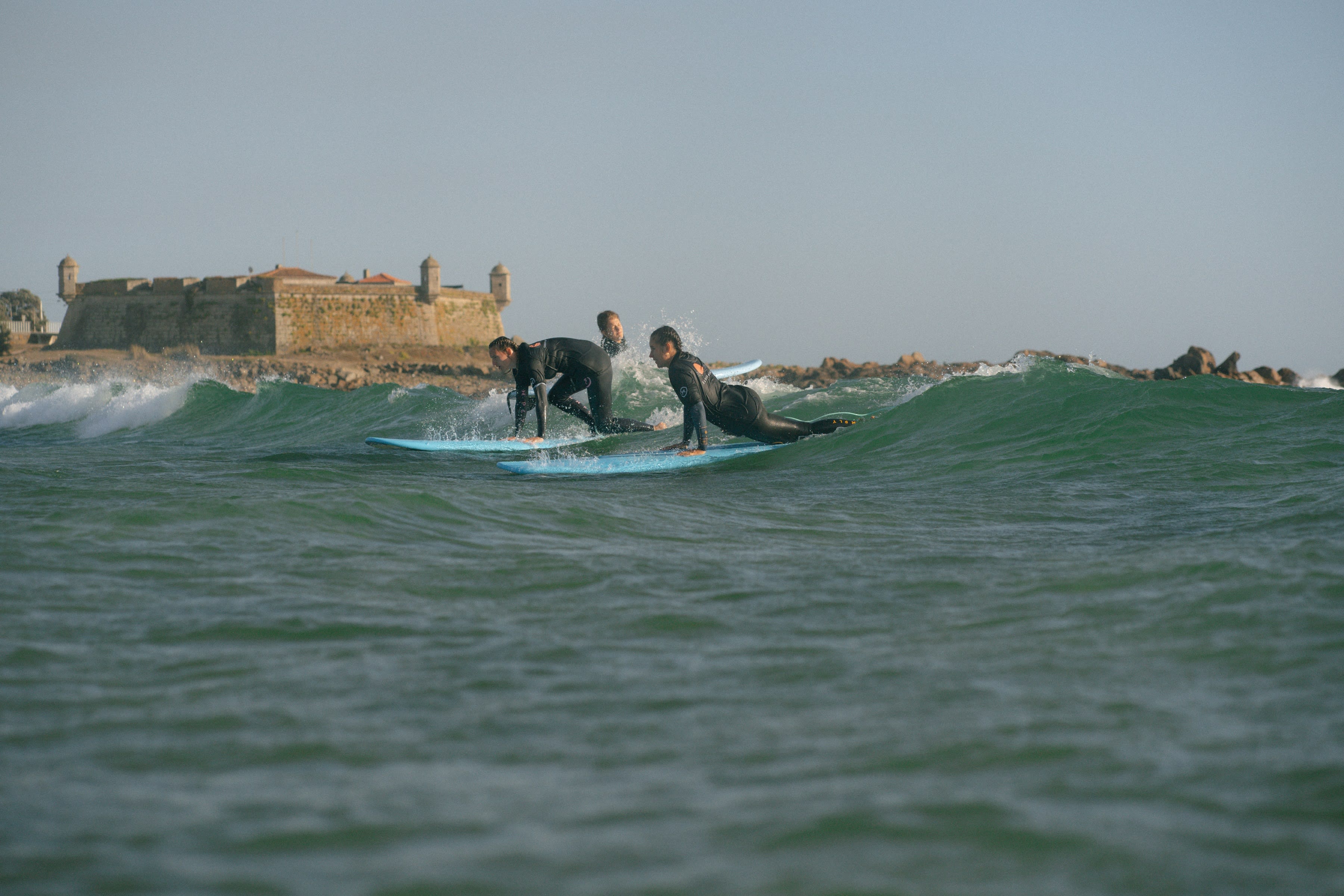
Goofy = surfer who surfs with his right foot at the front of the board.
Regular = surfer who surfs with the left foot at the front of the board.
Backfoot = a rider who tends to lean backwards. The front foot is not involved in the turning process at all, but essentially serves to ensure balance.
Bottom turn = a manoeuvre that allows you to change direction and gain speed on the waves, by compressing your knees and lowering your hips as much as possible. The bottom turn plays a crucial role in surfing because it allows you to perform more complex manoeuvres such as the cut back or tube ride. It is therefore crucial to master this technique perfectly before starting to perform more sophisticated manoeuvres. The photo below shows the bottom turn.
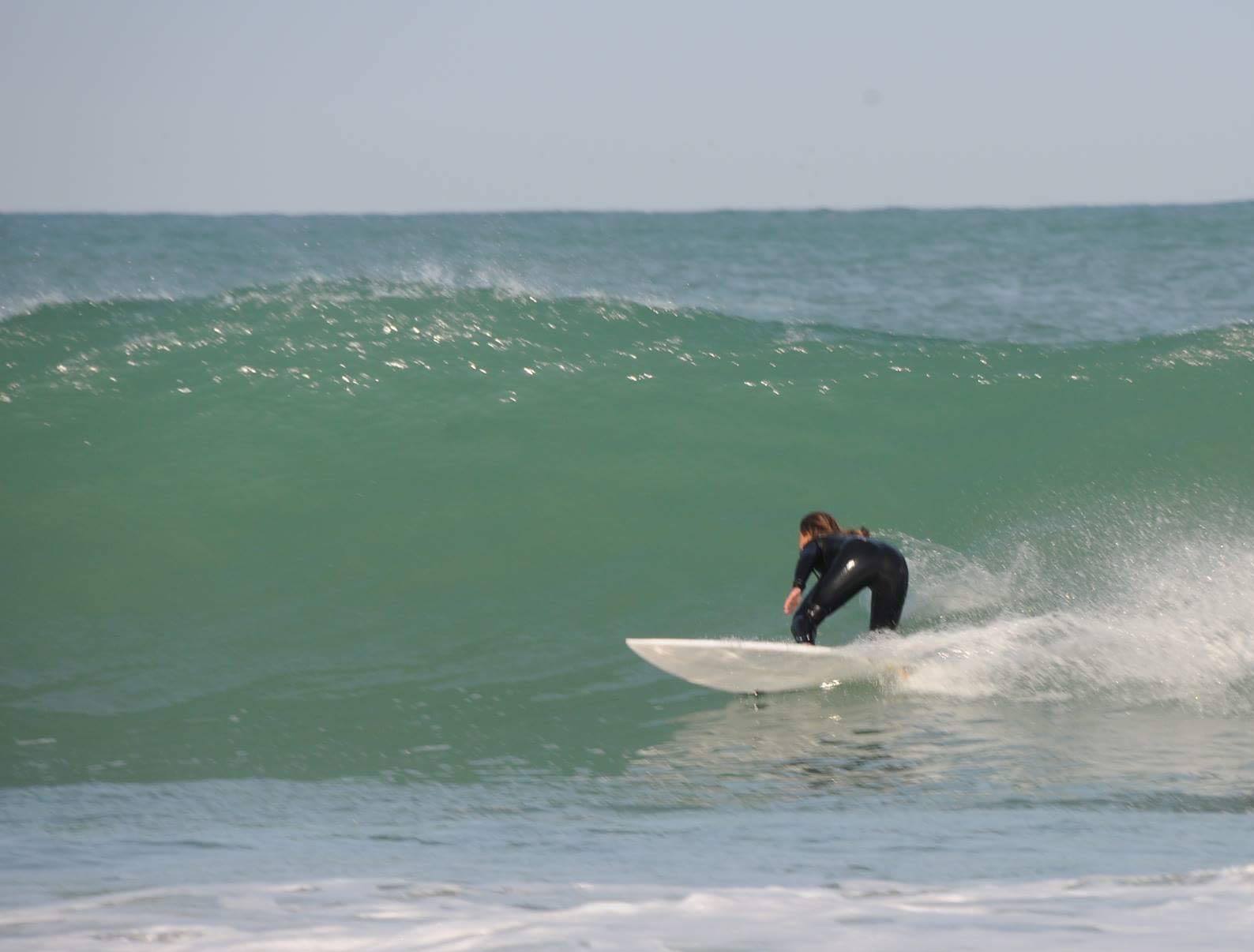
Aerials = a trick for experienced surfers, consisting of gaining momentum and performing an aerial jump. It requires training, experience and perseverance!
Cut back = the cut back is generally a manoeuvre done at the top of the wave to get back into position.
Snap = this is a skid on the wave during which the surfer briefly moves the back of the board to the front of the direction of travel. The photo below shows a snap.
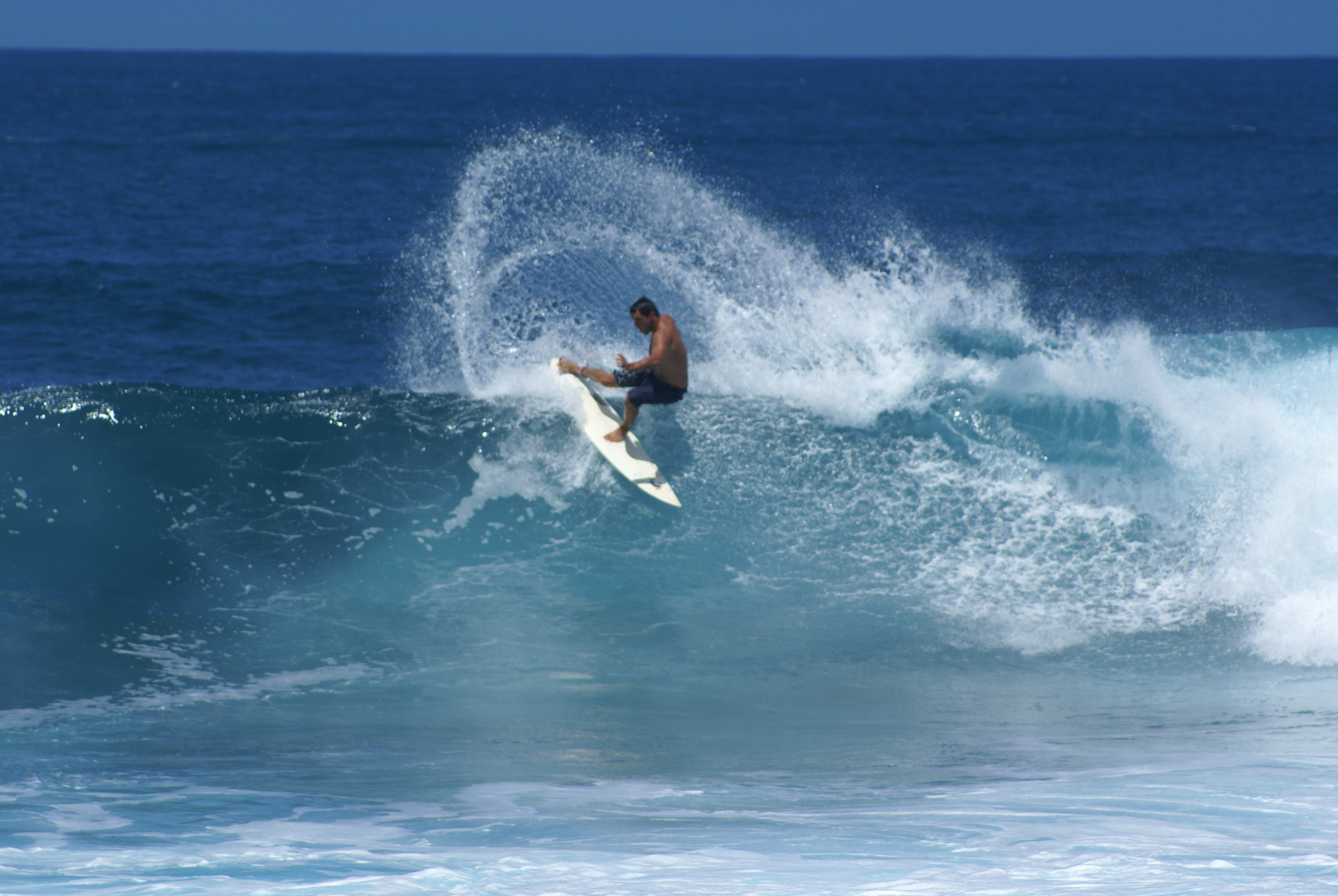
Top Turn = a turn at the top of the wave. There are several ways of calling a top turn, but they all mean the same thing. The ideal way to perform this trick is to face the wave at the end of the bottom turn. The top turn is the trick shown in the photo below.
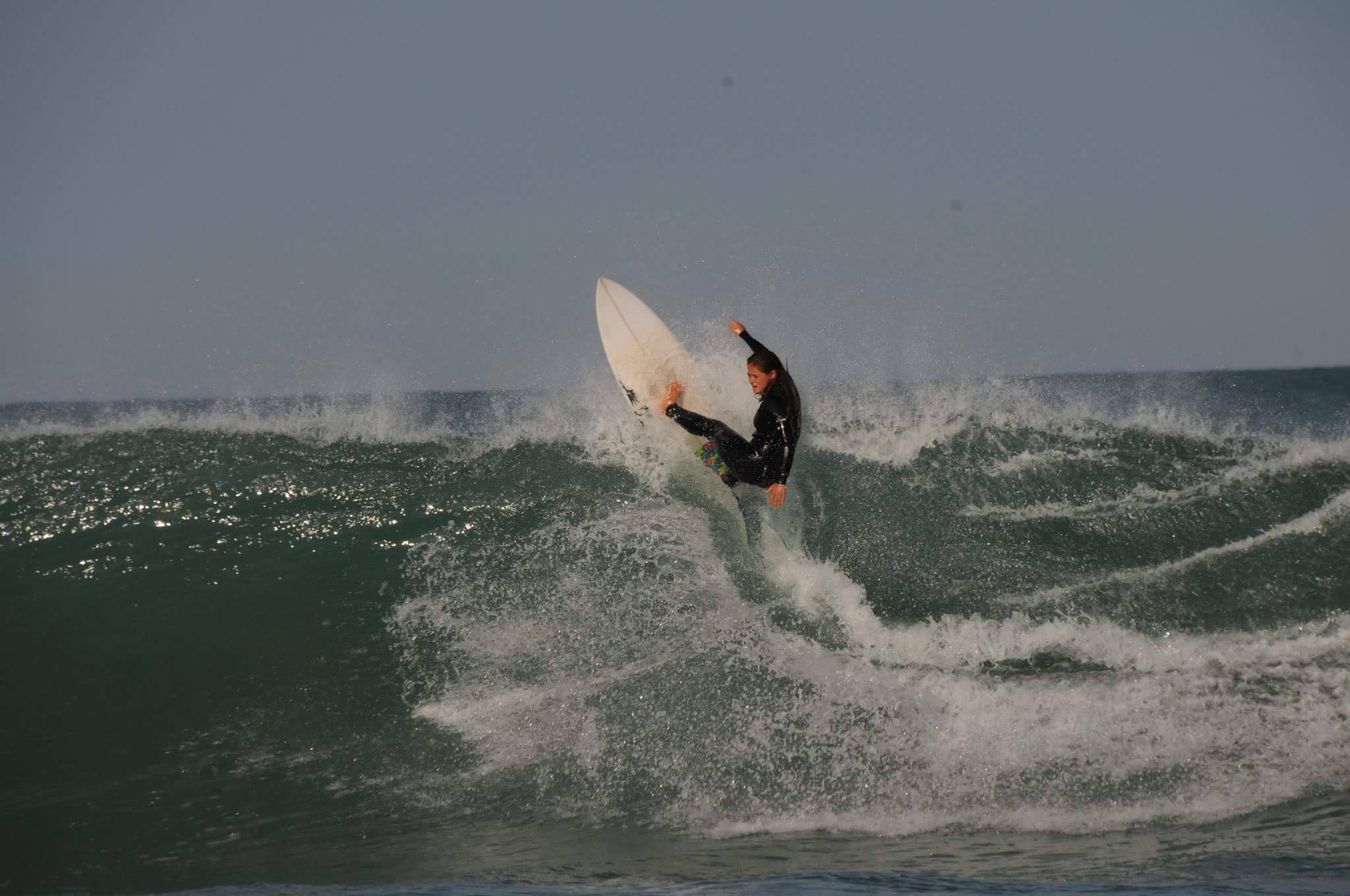
Frontside = when a surfer surfs facing the face, looking towards the wave.
Backside = opposite to frontside, the surfer's back is to the wave, so the wave is behind him.
Other surfing expressions to know
Passing the bar = this is probably the best-known surfing expression, meaning to go beyond the zone where the waves break and find yourself out in the open sea.
Priority = rules you need to know to maintain good relations in the water and ensure everyone's safety.
Spot = place where you surf, it's a word very often used by surfers to mean a place where you can surf. It's probably the most common surfing expression used by enthusiasts the world over.
Taxer or snaker = starting on a wave when a surfer is already on it, in other words stealing the surfer's right of way.
Wax = paraffin that is spread on the board to improve grip.
Book your next surf lesson!
Now that you've read up on surfing terms, why not take the plunge? You'll find a wide choice of surf spots all over Europe and the world! And if by any chance you can't decide where to go, we suggest you read our article on the best surf spots for beginners...